
Pathophysiology For The Health Professions - E- Book
6th Edition
ISBN: 9780323414340
Author: Karin C. VanMeter, Robert J Hubert
Publisher: Elsevier Health Sciences
expand_more
expand_more
format_list_bulleted
Question
Chapter 6, Problem 1LO
Summary Introduction
To describe: The basic characteristics of bacteria, viruses, chlamydiae, rickettsiae, mycoplasmas,
Concept introduction:
Expert Solution & Answer
Explanation of Solution
Bacteria
- Bacteria are single-celled organisms that do not need living tissue to live.
- They are classified on the basis of their shape, size, and arrangement.
- They are prokaryotic cells. Bacteria cells have organelles and DNA, immersed within cytoplasm. The cell is surrounded by a cell wall.
- Bacteria generally reproduce asexually by the process of binary fission.
Virus
- Viruses are obligate intracellular
parasites that need a living host cell for replication. Viruses are visible under electron microscope. - Virion is the infective, extracellular form of a virus. Virion consists of nucleocapsid and many animal viruses consist of lipid envelope.
Chlamydiae, rickettsiae, and mycoplasmas are the three groups of microorganisms that have some similarities with bacteria and viruses. These organisms replicate by binary fission but lack some basic component. They need the presence of living cells for reproduction.
Chlamydiae
- Chlamydiae lack many enzymes needed for
metabolic processes. They exist in elementary body form (EB) and reticulate body (RB) form. - EB is infectious form and possess cell wall and the ability to bind to epithelial cells.
- RB form is noninfectious but need the host cell for ATP production and reproduces as an obligate intracellular organism.
Rickettsiae
- They are small gram negative organism and an obligate intracellular parasite.
- Insect vectors transmit this organism and cause diseases such as typhus fever and Rocky Mountain spotted fever.
Mycoplasma
- Mycoplasma lack cell wall. They are not affected by several antimicrobial dugs.
- They are the smallest cellular microbes and can appear in many shapes.
Fungi
- They are eukaryotic and their cells have membrane-bound nucleus and cell organelles.
- They are heterotrophic and the cells possess cell wall.
- They are made up of hyphae that have feathery filaments. A group of hyphae is called mycelium.
- They have the ability to live on wide range of environmental conditions.
Prions
- They are small proteinaceous infectious particles.
- They cause many degenerative disorders that affect the central nervous system.
- They are abnormal molecules that stimulate the proteins present within the recipient brain to undergo folding and change of shape.
Helminths
- They are generally known as parasitic worms.
- They are multicellular and can be seen with the naked eye when they are mature.
- Some helminths are transmitted by soil and they infect the gastrointestinal tract.
Want to see more full solutions like this?
Subscribe now to access step-by-step solutions to millions of textbook problems written by subject matter experts!
Chapter 6 Solutions
Pathophysiology For The Health Professions - E- Book
Ch. 6 - Prob. 1LOCh. 6 - Prob. 2LOCh. 6 - Prob. 3LOCh. 6 - Prob. 4LOCh. 6 - Prob. 5LOCh. 6 - Prob. 6LOCh. 6 - Prob. 7LOCh. 6 - Prob. 8LOCh. 6 - Prob. 9LOCh. 6 - Prob. 10LO
Ch. 6 - Prob. 11LOCh. 6 - Prob. 12LOCh. 6 - Prob. 6.1AYKCh. 6 - Prob. 6.1ATACh. 6 - Prob. 6.1BTACh. 6 - Prob. 6.2ATACh. 6 - Prob. 6.2BTACh. 6 - Prob. 6.3ATACh. 6 - Prob. 6.3BTACh. 6 - Prob. 6.4ATACh. 6 - Prob. 6.4BTACh. 6 - Prob. 6.4CTACh. 6 - Prob. 6.5TACh. 6 - Prob. 6.6ATACh. 6 - Prob. 6.6BTACh. 6 - Prob. 6.6CTACh. 6 - Prob. 6.6DTACh. 6 - Prob. 6.7ATACh. 6 - Prob. 6.7BTACh. 6 - Prob. 6.7CTACh. 6 - Prob. 1CSACh. 6 - Prob. 2CSACh. 6 - Prob. 3CSACh. 6 - Prob. 4CSACh. 6 - Prob. 5CSACh. 6 - Prob. 1CSBCh. 6 - Prob. 2CSBCh. 6 - Prob. 3CSBCh. 6 - Prob. 4CSBCh. 6 - Prob. 5CSBCh. 6 - Prob. 1SQCh. 6 - Prob. 2SQCh. 6 - Prob. 3SQCh. 6 - Prob. 4SQCh. 6 - Prob. 5SQCh. 6 - Prob. 6SQCh. 6 - Prob. 7SQCh. 6 - Prob. 8SQCh. 6 - Prob. 9SQCh. 6 - Prob. 10SQ
Knowledge Booster
Learn more about
Need a deep-dive on the concept behind this application? Look no further. Learn more about this topic, health-nutrition and related others by exploring similar questions and additional content below.Recommended textbooks for you
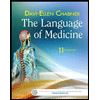 The Language of Medicine, 11eHealth & NutritionISBN:9780323370813Author:Davi-Ellen Chabner BA MATPublisher:Saunders
The Language of Medicine, 11eHealth & NutritionISBN:9780323370813Author:Davi-Ellen Chabner BA MATPublisher:Saunders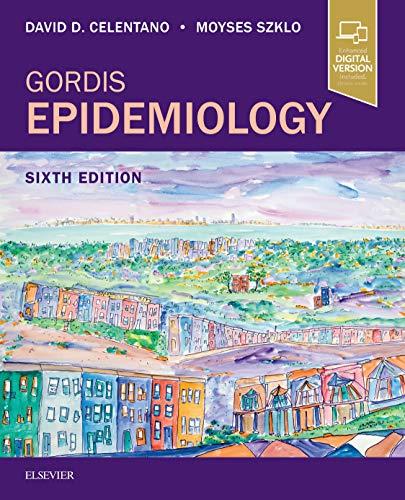 Gordis EpidemiologyHealth & NutritionISBN:9780323552295Author:David D. Celentano, Moyses SzkloPublisher:ELSEVIER
Gordis EpidemiologyHealth & NutritionISBN:9780323552295Author:David D. Celentano, Moyses SzkloPublisher:ELSEVIER Nutrition Through The Life CycleHealth & NutritionISBN:9781337919333Author:Brown, Judith E.Publisher:Cengage Learning,
Nutrition Through The Life CycleHealth & NutritionISBN:9781337919333Author:Brown, Judith E.Publisher:Cengage Learning,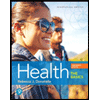 Health: The Basics (13th Edition)Health & NutritionISBN:9780134709680Author:Rebecca J. DonatellePublisher:PEARSON
Health: The Basics (13th Edition)Health & NutritionISBN:9780134709680Author:Rebecca J. DonatellePublisher:PEARSON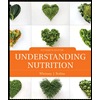 Understanding Nutrition (MindTap Course List)Health & NutritionISBN:9781337392693Author:Eleanor Noss Whitney, Sharon Rady RolfesPublisher:Cengage Learning
Understanding Nutrition (MindTap Course List)Health & NutritionISBN:9781337392693Author:Eleanor Noss Whitney, Sharon Rady RolfesPublisher:Cengage Learning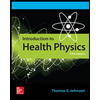 Introduction To Health PhysicsHealth & NutritionISBN:9780071835275Author:Johnson, Thomas E. (thomas Edward), Cember, Herman.Publisher:Mcgraw-hill Education,
Introduction To Health PhysicsHealth & NutritionISBN:9780071835275Author:Johnson, Thomas E. (thomas Edward), Cember, Herman.Publisher:Mcgraw-hill Education,

The Language of Medicine, 11e
Health & Nutrition
ISBN:9780323370813
Author:Davi-Ellen Chabner BA MAT
Publisher:Saunders

Gordis Epidemiology
Health & Nutrition
ISBN:9780323552295
Author:David D. Celentano, Moyses Szklo
Publisher:ELSEVIER

Nutrition Through The Life Cycle
Health & Nutrition
ISBN:9781337919333
Author:Brown, Judith E.
Publisher:Cengage Learning,

Health: The Basics (13th Edition)
Health & Nutrition
ISBN:9780134709680
Author:Rebecca J. Donatelle
Publisher:PEARSON

Understanding Nutrition (MindTap Course List)
Health & Nutrition
ISBN:9781337392693
Author:Eleanor Noss Whitney, Sharon Rady Rolfes
Publisher:Cengage Learning

Introduction To Health Physics
Health & Nutrition
ISBN:9780071835275
Author:Johnson, Thomas E. (thomas Edward), Cember, Herman.
Publisher:Mcgraw-hill Education,
Serology 101: Testing for IgG and IgM antibodies; Author: Beckman Coulter Dx;https://www.youtube.com/watch?v=LtqKB-qpJrs;License: Standard youtube license